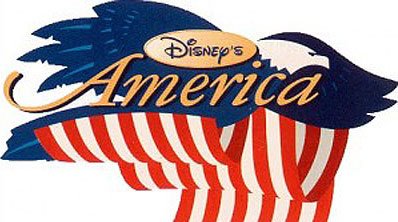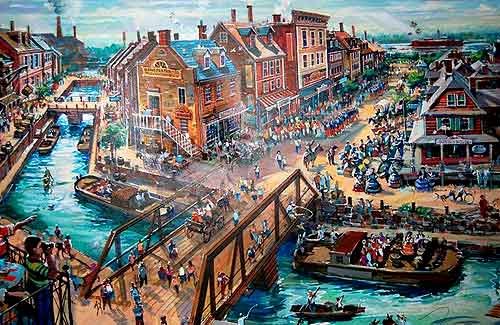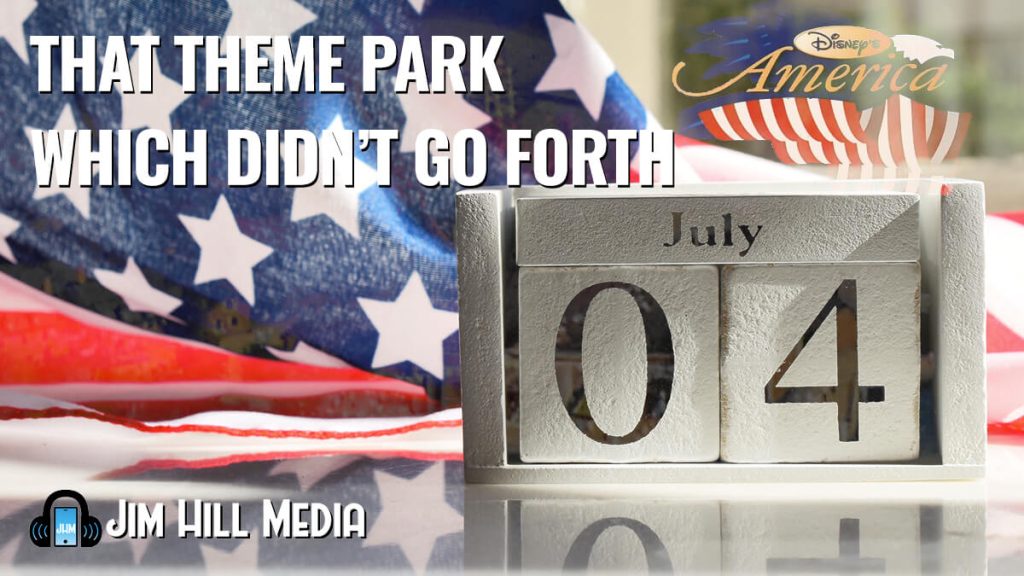Picture this: It’s August of 1994. And things are not looking good for the Disney’s America project.

Copyright Disney Enterprises, Inc. All rights reserved
What had once been envisioned as a $558 million regional theme park (which was deliberately designed to appeal to the 19 million tourists who visit Washington D.C. every year. Not to mention those 11 million locals who live in and around the Beltway) was now a PR nightmare for the Company. Since Disney’s America had been officially announced back in November of 1993, a powerful and deep-pocketed opposition had risen up in Prince William County. And they seemed determined to derail Disney’s America. Which – as the Company had initially proposed this project to the public – was to have celebrated ” … the American experience as (this theme park) moves and inspires guests to reconnect with (their) American heritage.”
But given that it was this “American Heritage” (or – be precise – the overly sanitized / simplified spin that the Imagineers were expected to put on our complex national narrative) aspect of this project that seemed to really rile up the historians & horsey set of Virginia, Disney officials wondered: Would a version of Disney’s America that de-emphasized history be that much more palatable to the project’s critics?
WDI decided to find out. Which is why – in August of 1994 – they put together a feasibility study for Disney’s American Celebration. Which deliberately downplayed all of the historical & educational elements that had previously dominated this proposed theme park. And in their place … Well, Disney’s American Celebration placed more of an emphasis on our country’s creative culture.

Concept art for Crossroads USA. Copyright Disney Enterprises, Inc. All rights reserved
So instead of areas like Crossroads USA and President’s Square. Disney’s American Celebration had attractions like Disney’s America Live – where you could listen to a 1940s-era swing band concert at the USO Bandstand. Or – better yet – experience some 1910-style amusement park rides while wandering through an authentic recreation of Coney Island.
Mind you, there were still some historic elements to be found in Disney’s American Celebration. But instead of areas like Victory Field (which was to have gone into great detail about the U.S.’s involvement in WWI & WWII), this theme park was to have had more nuanced & abstract exhibits like Service and Sacrifice. Which was to have featured this extra-sensory show called “Soldier Story.” Where – according to this proposed attraction’s logline in the Disney’s American Celebration feasibility study – was to have loaded guests aboard ” … a time machine through America’s conflicts.”
There was also supposed to have been a part of this theme park called the “America People.” With one side of this massive show building dedicated to America’s Native People. While the other side of this structure was to have told the Immigrant’s side of the story with an attraction that was ” ½ ride, ½ Muppet film.”
Prince William Board Chairman Kathleen K. Seefeldt, Virginia Gov. L. Douglas
Wilder, and Gov.-elect George E. Allen all look on as Disney Design &
Development President Peter Rummell explains the Company’s plans
for Prince William County. Copyright Disney Enterprises, Inc.
All rights reserved
This proposed theme park featured all this plus the Streets of America section of Disney’s America Celebration. Which was where you could have gotten a bagel or dined at a deli while exploring New York Street, or sampled some authentic Cajun fare while visiting New Orleans Square, or gotten some Dim Sum while strolling through a recreation of San Francisco’s Chinatown.
“So if the Imagineers put such a diligent effort into reinventing American Celebration, why then didn’t construction of this version of that regional theme park go forward?,” you ask. “Was the moneyed opposition in DC and Virginia more than the Mouse could handle? Was this what ultimately forced Disney to pull the plug on this project?”
Well, money was a factor in the Company’s decision to abandon Disney’s America / Disney’s American Celebration. Part of the problem was that the projected production costs of this project had begun to creep up (going from $551 million in October of 1993 to $591 million in November of 1994).
Copyright Disney Enterprises, Inc. All rights reserved
Then there was the seasonal nature of this regional theme park (To explain: Disney’s America / Disney’s American Celebration was supposed to go from being a seven-days-a-week operation to a five-days-a-week operation every year beginning in October, then weekends only in December. The theme park was supposed to have been open for the weeks surrounding Christmas and New Years. And then DA / DAC was supposed to have been shut down, locked up tight from January 1st through March 1st) that made Disney’s accountants nervous.
And on the heels of Euro Disney’s financial problems, Disney’s Board of Directors just couldn’t see its way clear to financing the construction of yet another high-profile project that might struggle for years before it could finally turn a profit. Which is why Michael Eisner – who was originally so passionate about the unique storytelling opportunities that Disney’s America presented – ultimately ordered that development of this theme park be stopped on September 28, 1994. Which was just over a month after the Disney’s America Feasibility Assessment (which is where the info for today’s JHM article came from) was presented to Mouse House managers.
So today – on the Fourth of July – please take a moment to mourn that patriotic project that ultimately didn’t go forth: Disney’s America / Disney’s American Celebration.
